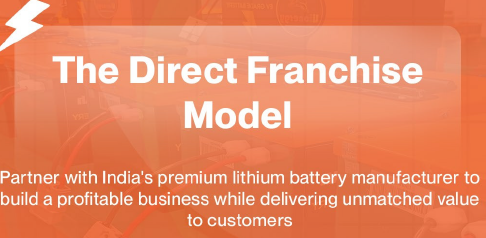MSME Govt of India Registered Autonomous institution.
Special session for working professionals, Business owners
Solar Power EV Charging Station Course (Online)
What you will learn?
1. EV CS Market – Global and Indian
The EV charging business offers a variety of opportunities, from installing and operating charging stations to providing related services like software and maintenance. Businesses can leverage these opportunities by establishing public charging stations, offering home charging solutions, or partnering with existing networks.
Topics covered:
Global and Indian EV market and PCS business opportunities, Overview of Electric Vehicle Market, Fame India Scheme 2022, Electric Rickshaw Market, EVs Components Industry Growth FY 2025
Topics covered:
Global and Indian EV market and PCS business opportunities, Overview of Electric Vehicle Market, Fame India Scheme 2022, Electric Rickshaw Market, EVs Components Industry Growth FY 2025
2. Physics of PV Cell and Module
Photovoltaic (PV) cells, or solar cells, convert sunlight directly into electricity through the photovoltaic effect.
Topics covered:
Physics of Photovoltaic Systems, Semiconductor Materials, N-type and P-type Semiconductors, PN Junction and Current Flow, Solar Cell Effi ciency, Generations of Solar Cell Technology, PERC Solar Cell Technology, Multi-Busbar Solar Cells, Cut Cell Technology, Half-Cut and Third-Cut Cell Technology, High-Density Interconnection Panels, Tiling Ribbon (TR) Technology, N-Type Solar Cells, Integrated Back Contact (IBC) Solar Cells, All Back Contact (ABC) Solar Panels, Bifacial Solar Modules, Advanced Cell Technologies, Solar Panel Manufacturing Process, Evolution of Solar Cell Sizes and Power Output, Series vs. Parallel Connection of Solar Panels, Mismatch Issues, and Advancements in Solar Cell and Panel Size. Government Approved Panels (ALMM) and Review Questions.
Topics covered:
Physics of Photovoltaic Systems, Semiconductor Materials, N-type and P-type Semiconductors, PN Junction and Current Flow, Solar Cell Effi ciency, Generations of Solar Cell Technology, PERC Solar Cell Technology, Multi-Busbar Solar Cells, Cut Cell Technology, Half-Cut and Third-Cut Cell Technology, High-Density Interconnection Panels, Tiling Ribbon (TR) Technology, N-Type Solar Cells, Integrated Back Contact (IBC) Solar Cells, All Back Contact (ABC) Solar Panels, Bifacial Solar Modules, Advanced Cell Technologies, Solar Panel Manufacturing Process, Evolution of Solar Cell Sizes and Power Output, Series vs. Parallel Connection of Solar Panels, Mismatch Issues, and Advancements in Solar Cell and Panel Size. Government Approved Panels (ALMM) and Review Questions.
Outcome
Understanding Semiconductor Physics, PV Cell Structure and Operation, Emerging Technologies - Advanced Materials, Future Trends and Manufacturing Process3. Solar Module Datasheet Analysis
A solar panel datasheet is a technical document detailing a solar module's performance, specifications, and characteristics. Understanding these datasheets is crucial for selecting the right panels for a solar energy system and ensuring optimal performance and longevity.
Topics covered:
Technical Specifi cations of Solar Panels, Standard Test Condition (STC), Nominal Operating Cell Temperature (NOCT), Voltage and Current Parameters, Temperature and Solar Radiation Effects, Fill Factor and Panel Quality, Effi ciency Calculation, Solar Panel Effi ciency Factors, Environmental Impact on Power Plant Efficiency, System and Component Considerations, Temperature Coefficient of PV Modules, Diode Usage in Solar Systems, Series and Parallel Connections, Solar Panel Specifi cation Sheet - Electrical Characteristics, Thermal Characteristics and Temperature Coefficients, Mechanical Characteristics, Solar Cell Type and Size, Solar Panel Warranty, Bifacial Solar Panels, Factors Affecting Bifacial Gain, Refl ectivity and Bifacial Gain, Solar Panel Degradation and Damage, Performance Warranty, Solar Panel Manufacturing and Export from India, DCR vs. Non-DCR Solar Panels and Homework Assignment.
Topics covered:
Technical Specifi cations of Solar Panels, Standard Test Condition (STC), Nominal Operating Cell Temperature (NOCT), Voltage and Current Parameters, Temperature and Solar Radiation Effects, Fill Factor and Panel Quality, Effi ciency Calculation, Solar Panel Effi ciency Factors, Environmental Impact on Power Plant Efficiency, System and Component Considerations, Temperature Coefficient of PV Modules, Diode Usage in Solar Systems, Series and Parallel Connections, Solar Panel Specifi cation Sheet - Electrical Characteristics, Thermal Characteristics and Temperature Coefficients, Mechanical Characteristics, Solar Cell Type and Size, Solar Panel Warranty, Bifacial Solar Panels, Factors Affecting Bifacial Gain, Refl ectivity and Bifacial Gain, Solar Panel Degradation and Damage, Performance Warranty, Solar Panel Manufacturing and Export from India, DCR vs. Non-DCR Solar Panels and Homework Assignment.
Outcome
Understanding Solar Module, Interpreting Datasheet Specifications - Electrical Characteristics, Mechanical Specifications, Operating Conditions, Safety and Certification and Staying Updated with Industry Trends4. Solar Resource Assessment
Solar resource assessment is the process of evaluating a location's solar energy potential to determine the viability of a solar power project. This involves collecting and analyzing solar irradiance data, along with other meteorological data, to accurately estimate the amount of energy that can be generated.
Topics covered:
Solar Resource Data and Irradiation Assessment, Solar Energy and Radiation Spectrum, Solar Radiation and Measurement, Shadow Analysis and Solar Window, Sun Path Diagram and Solar Angles, Shading Assessment Using Solar Angles and Tools, Air Mass and Solar Window Details, Solar Declination Angle, Tilt Angle Importance, Optimum Tilt Angle Calculation, Altitude Angle, Sessional vs. Fixed Tilt Angle, Tilt Angle Based on Location, Panel Spacing, Table for Solar Panel Mounting, Solar Resource Data and System Design, Practical Aspects of Tilt Angle Adjustment and Hometask Assignment.
Site Suitability Assessment - Feasibility Studies, Plant Performance Analysis, Factors Affecting Solar Potential
Data Collection and Analysis Techniques - Onsite Measurements, Resource data access, Data Validation
Topics covered:
Solar Resource Data and Irradiation Assessment, Solar Energy and Radiation Spectrum, Solar Radiation and Measurement, Shadow Analysis and Solar Window, Sun Path Diagram and Solar Angles, Shading Assessment Using Solar Angles and Tools, Air Mass and Solar Window Details, Solar Declination Angle, Tilt Angle Importance, Optimum Tilt Angle Calculation, Altitude Angle, Sessional vs. Fixed Tilt Angle, Tilt Angle Based on Location, Panel Spacing, Table for Solar Panel Mounting, Solar Resource Data and System Design, Practical Aspects of Tilt Angle Adjustment and Hometask Assignment.
Outcome
Understanding Solar Radiation - Sun-Earth Geometry, Irradiance Data, Measurement and Analysis, Shadow AnalysisSite Suitability Assessment - Feasibility Studies, Plant Performance Analysis, Factors Affecting Solar Potential
Data Collection and Analysis Techniques - Onsite Measurements, Resource data access, Data Validation
5. Solar plant Balance of System
The "Balance of System" (BOS) in a solar plant refers to all the components and costs excluding the solar panels themselves. It encompasses everything needed to convert, control, and deliver the electricity generated by the solar panels.
Topics covered:
Balance of System Introduction, Module Connection and Array Junction Box, DC to AC Conversion and Distribution, System Safety, Standalone Systems, Hybrid Solar Systems, Grid-Tie or On-Grid Systems, DC and AC Buses, Net Metering and Gross Metering, Large-Scale Power Plant Diagram, Monitoring Systems for Performance,
Balance of System Components (Detailed), Solar Charge Controllers (Types and Function), Battery Charging Process, PWM Charge Controller Specifi cations, MPPT Charge Controller Features, MPPT System Voltage and Technical Data Sheets
Inverter Basics, Types of Inverters Based on System and Application, Based on Phase and Transformer, Micro and String Inverter Details, String vs. Central vs. Micro Inverters, Key Parameters of Hybrid Inverter and Data Sheet, Comparison of Different Inverter Data Sheets, Communication Interfaces and Off-Grid Capability, Monitoring Systems and Customer Benefits, Three-Phase Inverters, MPPT Trackers, AC Output and Effi ciency of Three-Phase Inverters, DC and AC Sides of a Solar System, Energy Conversion Losses and Effi ciency, DC to AC Ratio and Oversizing, Solar System Warranty and Homework
Array Junction Box (AJB), AJB Installation and Operation, Multiple String Confi guration, ACDB and Inverter Integration, Multi-Input AJB Confi gurations, Series vs. Parallel Connections, Surge Protection Device (SPD) Functionality, Solar DC Cable, Grounding in Solar Systems, Plant Layout and Installation Considerations, IP Rating of Enclosures, MC4 Connectors for DC Wiring, Cable and Fuse Sizing, Solar Panel Mounting Structures, Installation Best Practices, Calculating Mounting Structure Components, Project Site Overview and Components and Hometask Assignment.
Topics covered:
Balance of System Introduction, Module Connection and Array Junction Box, DC to AC Conversion and Distribution, System Safety, Standalone Systems, Hybrid Solar Systems, Grid-Tie or On-Grid Systems, DC and AC Buses, Net Metering and Gross Metering, Large-Scale Power Plant Diagram, Monitoring Systems for Performance,
Balance of System Components (Detailed), Solar Charge Controllers (Types and Function), Battery Charging Process, PWM Charge Controller Specifi cations, MPPT Charge Controller Features, MPPT System Voltage and Technical Data Sheets
Inverter Basics, Types of Inverters Based on System and Application, Based on Phase and Transformer, Micro and String Inverter Details, String vs. Central vs. Micro Inverters, Key Parameters of Hybrid Inverter and Data Sheet, Comparison of Different Inverter Data Sheets, Communication Interfaces and Off-Grid Capability, Monitoring Systems and Customer Benefits, Three-Phase Inverters, MPPT Trackers, AC Output and Effi ciency of Three-Phase Inverters, DC and AC Sides of a Solar System, Energy Conversion Losses and Effi ciency, DC to AC Ratio and Oversizing, Solar System Warranty and Homework
Array Junction Box (AJB), AJB Installation and Operation, Multiple String Confi guration, ACDB and Inverter Integration, Multi-Input AJB Confi gurations, Series vs. Parallel Connections, Surge Protection Device (SPD) Functionality, Solar DC Cable, Grounding in Solar Systems, Plant Layout and Installation Considerations, IP Rating of Enclosures, MC4 Connectors for DC Wiring, Cable and Fuse Sizing, Solar Panel Mounting Structures, Installation Best Practices, Calculating Mounting Structure Components, Project Site Overview and Components and Hometask Assignment.
Outcome
Bill Reduction, Calculating the required capacity of a rooftop solar system based on energy consumption and available space, Financial Analysis and Savings, Regulations and Permitting, Design and implement rooftop solar systems, Evaluate the feasibility and financial benefits of solar projects, Environmental Benefits6. Different type of Lithium-ion battery
Lithium-ion batteries are widely used due to their high energy density, light weight, and long lifespan, making them suitable for various applications, including portable electronics, electric vehicles, and energy storage systems.
Topics covered:
Battery Introduction, Battery Types, Relationship Between Power, Energy, and Applications, Comparison of Different Battery Chemistries, Advantages and Disadvantages of Lithium-ion vs. Sodium-ion Batteries, Composition and Reactivity of Lithium-ion Batteries, Key Properties of Lithium-ion Battery Chemistries, Lead-Acid Batteries, Nickel Batteries, Lithium-Ion Batteries, Lithium Battery Applications and Chemistries, Types of Lithium-Ion Batteries, Battery Cell Selection Parameters, Lithium Cobalt Oxide (LCO) Cell Characteristics, Lithium Manganese Oxide (LMO) Cell Characteristics, Lithium Nickel Manganese Cobalt Oxide (NMC) Cell Characteristics, NMC Cell for Electric Vehicles, Lithium Iron Phosphate (LFP) Battery Characteristics, LFP Battery Advantages and Disadvantages, LMFP Battery and Performance Comparison, Prismatic and Blade Cells and Battery Manufacturing and Import,
Lithium Titanate (LTO) Battery, Comparison of Battery Chemistries, C-rate Explained, Battery Overcharging and Safety, Short Circuit and Mechanical Damage Tests and Field Testing of Cell Stability
Topics covered:
Battery Introduction, Battery Types, Relationship Between Power, Energy, and Applications, Comparison of Different Battery Chemistries, Advantages and Disadvantages of Lithium-ion vs. Sodium-ion Batteries, Composition and Reactivity of Lithium-ion Batteries, Key Properties of Lithium-ion Battery Chemistries, Lead-Acid Batteries, Nickel Batteries, Lithium-Ion Batteries, Lithium Battery Applications and Chemistries, Types of Lithium-Ion Batteries, Battery Cell Selection Parameters, Lithium Cobalt Oxide (LCO) Cell Characteristics, Lithium Manganese Oxide (LMO) Cell Characteristics, Lithium Nickel Manganese Cobalt Oxide (NMC) Cell Characteristics, NMC Cell for Electric Vehicles, Lithium Iron Phosphate (LFP) Battery Characteristics, LFP Battery Advantages and Disadvantages, LMFP Battery and Performance Comparison, Prismatic and Blade Cells and Battery Manufacturing and Import,
Lithium Titanate (LTO) Battery, Comparison of Battery Chemistries, C-rate Explained, Battery Overcharging and Safety, Short Circuit and Mechanical Damage Tests and Field Testing of Cell Stability
Outcome
Equip students with a comprehensive understanding of Li-ion batteries - Learning about the different positive electrode materials, their synthesis, and their impact on battery performance and lifespan. Gaining knowledge on battery safety, handling best practices, and the mechanisms that lead to thermal runaway.7. Lithium-ion Cell Parameters
Lithium-ion cell parameters define its electrical and physical characteristics. Key parameters include voltage (nominal, charge, discharge cut-off), capacity (rated and nominal), internal impedance, C-rate (discharge and charge rates), and operating temperature range. These parameters influence cell performance, lifespan, and safety.
Topics covered:
Introduction to Cell Parameters, Key Battery Parameters, Charge and Charge Capacity, Columbic Efficiency and Capacity Retention, Battery Capacity and Voltage, Nominal Voltage and State of Charge, Nominal Cell Capacity and Discharge, Temperature Effects, Actual Cell Capacity and Capacity Fade, Battery Repair and Cell Health, Open Circuit Voltage and State of Charge (SoC), Self Discharge, Continuous and Peak Current, Constant Current Constant Voltage (CCCV) Charging, Fast Charging vs. Slow Charging, C-Rate Definition and C-Rate Calculation, Impact of C-Rate on Battery Performance and Heat Generation, State of Charge (SOC) and State of Health (SOH), Open Circuit Voltage (OCV) and SOC Estimation, Internal Resistance and Temperature Effects, Cycle Life, State of Power (SOP), Battery Testing and Capacity Measurement, Causes of Battery Degradatio, Battery Restoration and Degradation, Maximum Power Point and cell Efficiency, Battery Management System (BMS), Temperature Effects on Battery Performance, Thermal Runaway and Safety, Strategies for Small Battery Manufacturers, Session Summary and Homework Assignment.
Topics covered:
Introduction to Cell Parameters, Key Battery Parameters, Charge and Charge Capacity, Columbic Efficiency and Capacity Retention, Battery Capacity and Voltage, Nominal Voltage and State of Charge, Nominal Cell Capacity and Discharge, Temperature Effects, Actual Cell Capacity and Capacity Fade, Battery Repair and Cell Health, Open Circuit Voltage and State of Charge (SoC), Self Discharge, Continuous and Peak Current, Constant Current Constant Voltage (CCCV) Charging, Fast Charging vs. Slow Charging, C-Rate Definition and C-Rate Calculation, Impact of C-Rate on Battery Performance and Heat Generation, State of Charge (SOC) and State of Health (SOH), Open Circuit Voltage (OCV) and SOC Estimation, Internal Resistance and Temperature Effects, Cycle Life, State of Power (SOP), Battery Testing and Capacity Measurement, Causes of Battery Degradatio, Battery Restoration and Degradation, Maximum Power Point and cell Efficiency, Battery Management System (BMS), Temperature Effects on Battery Performance, Thermal Runaway and Safety, Strategies for Small Battery Manufacturers, Session Summary and Homework Assignment.
Outcome
Understand Core Parameters, Learn Parameter Estimation & Measurement, Apply knowledge to evaluate and select appropriate cells for applications such as electric vehicles and portable electronic devices.8. EV Charging Station
Electric vehicle (EV) charging technology encompasses the various methods and infrastructure used to replenish an EV's battery. Understanding these technologies is crucial for optimizing charging strategies and maximizing the benefits of EV ownership.
Topics covered:
Introduction to EV Charging technology, Onboard charging and Off-board charging, AC charging vs DC charging, Different types of EV charger connectors, Battery swap technology
Topics covered:
Introduction to EV Charging technology, Onboard charging and Off-board charging, AC charging vs DC charging, Different types of EV charger connectors, Battery swap technology
Outcome
Develop skills in location planning, spatial allocation for demand, and assessing energy needs for charging infrastructure. Understand how to plan for public charging, considering factors like electricity supply and demand.10. Solar Power Plant for EV Charging Station
A solar power plant for an EV charging station involves using solar panels to generate electricity, which is then used to charge electric vehicles.
Topics covered:
EV Charging Station Design, GOI guide line, Datasheet analysis of charger, find out electric load, phase connection, transformer sizing, cable sizing, safety process, space requirement, parking space, charging station Layout, shade frame work, emergency evacuation planning, fire fighting system,
Proposed Tariff for EV Charging, Electric Vehicle Charging, Tariff in Different States of India Understand DISCOM electric charges in depth, solar power plant design and report generation using solar simulation software, Station document for residential house, society building, commercial building, industry shade and road side public charging station, Financial Discloser
Topics covered:
EV Charging Station Design, GOI guide line, Datasheet analysis of charger, find out electric load, phase connection, transformer sizing, cable sizing, safety process, space requirement, parking space, charging station Layout, shade frame work, emergency evacuation planning, fire fighting system,
Proposed Tariff for EV Charging, Electric Vehicle Charging, Tariff in Different States of India Understand DISCOM electric charges in depth, solar power plant design and report generation using solar simulation software, Station document for residential house, society building, commercial building, industry shade and road side public charging station, Financial Discloser
Outcome
Learn to identify optimal locations for solar-powered EV charging stations, considering factors like sun exposure and available space. Understand how to integrate solar panels, energy storage systems (like battery banks), and EV charging infrastructure.11. Overall discussion and Business Guide
Starting a solar-powered EV charging station business involves a strategic approach to location, technology, and business model. Key steps include market research, securing permits, choosing the right charging equipment (including solar panels), and setting competitive pricing.
Topics covered:
Training Session Review, Project Submission and Examination,
Starting Business: Trade Name Registration, Steps to Starting a Lithium-ion battery Business, Trademark Registration, GST and MSME registrations, Website Development for Business, Business and Branding Strategy, Marketing and Promotion, Website Optimization and Visibility, Government Initiatives, Supplier and Agency Networking, Project Proposals and Securing Work, Partnerships OEM and Post-Training Support from Academy of EV Technology.
Topics covered:
Training Session Review, Project Submission and Examination,
Starting Business: Trade Name Registration, Steps to Starting a Lithium-ion battery Business, Trademark Registration, GST and MSME registrations, Website Development for Business, Business and Branding Strategy, Marketing and Promotion, Website Optimization and Visibility, Government Initiatives, Supplier and Agency Networking, Project Proposals and Securing Work, Partnerships OEM and Post-Training Support from Academy of EV Technology.
Quick Inquiry Form

Interactive Session

Practical & Doubt Session

E-Library Study Materials

Online Evaluation












